I knew and talked to DuRoss throughout my freshman year, but I first “really” met him my summer before Sophomore year. My mom made me to sign up for the Guatemala Social Immersion Trip. I honestly did not want to go because this trip would force me to step more out of my comfort zone then I ever had to before. I would be away from my family without contact for a week and that was crazy to me. Even with those factors, I am so glad I did go on the trip though because that is where some of by best relationships were created. This included my relationships with God, friends, and teachers. One of these special teachers was Mr. DuRoss.
Mr. DuRoss was and still is a relatable and open person. I aspire to be like him in this way. I had to lean on him during my struggles during the trip. He was the number one person to go to, so we built a friendship in this way. I will always remember the one morning we, along with some other students hiked alongside a mountain to take in the scenery and appreciate the beauty around us. There, he took pictures of birds and also let us use his camera to take pictures of ourselves. We could see the beautiful Lake Atitlan, one of the prettiest things I have ever seen. I was also one of the first people DuRoss contacted after learning about his new opportunity to create a new Christian leadership group for my class. This shows that he truly cares about his students and loves the work he does. These are the reasons for why I interviewed him.
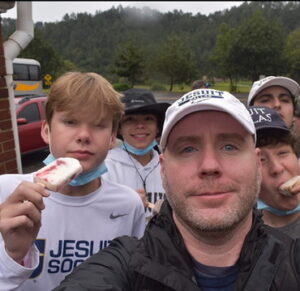
What got you into the social immersion trips?
“In college, I went to Ecuador, which is where we go with Jesuit now. I had a wonderful experience that really broadened my horizons and expanded my world view. I also went to Tijuana, Mexico in college and had a very similar experience. When I became a teacher, I wanted Jesuit students to have the same formative experience; therefore, I approached Mr. Perry. He sent me to El Salvador, which ended up not working out for a number of factors with their government, but that was a wonderful experience as well. Then eventually, he have me permission to have the Ecuador program which we do now. He has also been kind enough to send me on Guatemala on multiple occasions.”
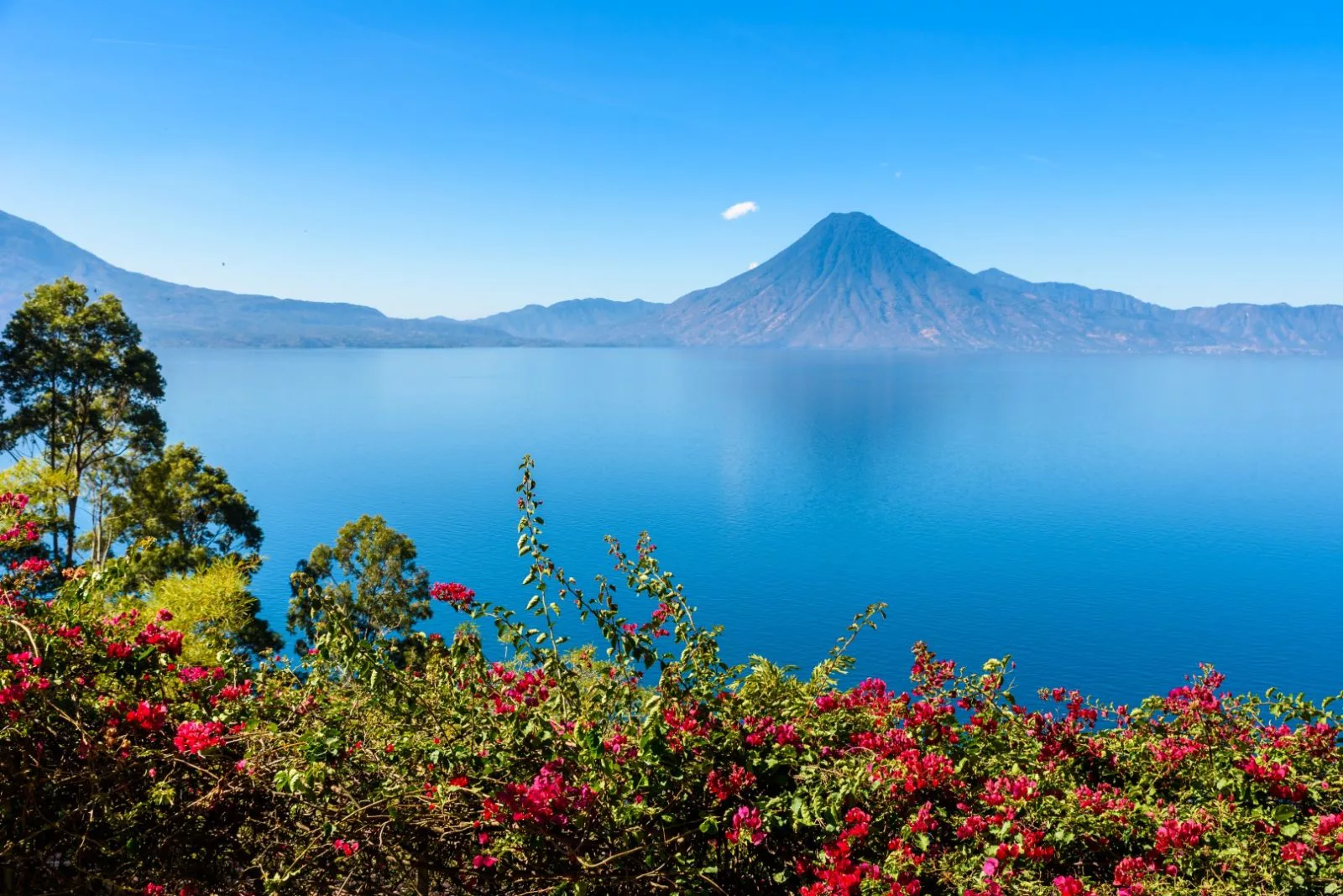
When did you first start teaching here and first start doing the social immersion trips?
“I first started teaching here in the fall of 2009. The first trip I did for Jesuit for social justice was El Salvador in 2011. We had a few students on that trip, but that was the first and last experience. My first Ecuador group was in 2014. My first Guatemala group was in the summer of 2021.”
How many times have you done the Ecuador and Guatemala trips?
“I have taken student groups to Ecuador six times and Guatemala groups three times.”
Did Jesuit have the social immersion trips when you went to school here?
“I think that program was just beginning. I didn’t do any of them. If we did, I was not aware of them. I know that my brother who graduated two years after me went to Mexico with Mr. Perry. It is possible that they were doing those trips and that I just did not know about them, or I did not apply for whatever reason. As a student, these trips did not influence my decision to lead the social immersion trips myself. It was still mostly from college.”
What college did you go to, did you have an idea of what you wanted your job to be, and did you always want to become a religion teacher?
“I went to Loyola Marymount University in Los Angeles, California. After speaking at a Kairos retreat my senior year, Mr. Fitzsimmons pulled me aside and said I had done a good job. He also said that I was a natural teacher, which startled me. I had never thought about being a teacher. So, in college, I kept thinking about what he had told me. I was pretty good at standing in front of people and communicating ideas and whatnot. I just thought it might be a natural fit, so I started to explore that more in my senior year in college and I feel like it really kind of hit me that teaching history and theology would be something that I would be wanting to do.”
“That led me to do Jesuit’s Alumni Service Core program. I was the first ASC in Jesuit’s history along with Mr. Segal, Mr. Erickson, and another teacher named Mr. Freund. Jesuit then actually hired me out of the ASC program to teach history, which I taught for my first two years here. I taught world history and debate. I was a debate teacher along with Mr. Lingel. I’ve taught that every summer in the rhetoric and civics class from the time I was an ASC guy, all the way up to just recently when the class became the geography class. I now teach the geography class in the summer as well.”
Do you like teaching the Rhetoric and Civics class or Geography more?
“They both have different strengths. I think that the debate class is more active and engaging, but I think the foundations in geography class give the students a good baseline of history. They are both really fun in their own way.”
What do you love about teaching?
“It’s definitely the students. They make me laugh all day long. I think that it is fun to see the guys have faith experiences that bring them closer to God. I think it is fun to see the students apply real-life lessons to their own lives. It is very refreshing to see people learn and to internalize the truths Jesuit is trying to convey, specifically in relationship to their faith.”
How close are you with the other teachers?
“I am very good friends with the people that I work with. They are the people I work with and see every day, so the friendships we build are inevitable. I sometimes hang out with the other teachers outside of school. For example, Mrs. Johnston, one of my co-moderators for Faithful Fellas, and I are very good friends.”
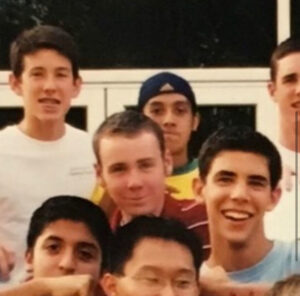
When you see a student not active in class, how do you motivate them to get involved and actively participate?
“I think for each kid, they have their own challenges. The first step would be forming a relationship. You cannot really help someone if you do not really know who they are or know anything about them. I have had students in the past that were sort of
“arms-crossed” and did not want to engage. But then you find something interesting about them like that they really love anime or they love hunting or they love whatever. If you then engage with them about the subject that they love, they realize that you care, and all of the sudden they start motivating themselves to be more successful in your class.”
Do you still talk to any of your past students?
“Absolutely. I just found out that one of the students I was very close with just got engaged over the weekend. I am very happy for him. I will also occasionally go out to lunch over Christmas Break with guys who have graduated to catch up, but not that often though.”
What do you hope students will learn from your teachings and teaching style?
“I hope that my students will learn to be open to new ideas and to be open to growth. I also hope that they will be more attune to where God is at work in their lives.”
As the final weeks approach, how do you advise your students to deal with stress?
“Deep breaths, meditation, doing one thing at a time. Make checklists and prioritize doing one thing at a time. Slow and steady wins the race.”
What do you think about the new finals week system?
“I think it puts a lot of stress on the student at the end. It is the first year we have done this, so I can not really comment on this until we see the results.”
Why did you start the class of 2025 religious group, Faithful Fellas?
“I was in a class called CLC, which was a Christian Living Community in college, and it was where you shared your faith with the same people your age and you motivated and challenged each other to grow in your faiths. When I came to Jesuit, we had something like that for a while called “Peer Ministry,” but that went away after a couple years and I have always kind of wanted to bring that back. When administration said that we were going to get a group like that going again, I was one of the first ones to volunteer and jump on board. I told them it was a great idea and wanted to get involved and bring the faith group back to life.”
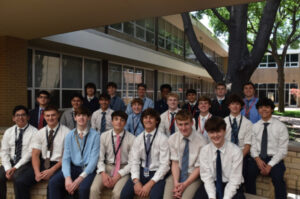
Do you think that God has always been a big motivator in your life?
“Yes, absolutely. Without God, we do not have anything. When I was your age in high school, a lot of it was just going through the normal stages of my faith life. I did the easy stuff like going to mass with my parents and going to the occasional retreat. But, the older you get, you have to work on making your faith your own which is a big challenge. You have to have a more mature understanding of your faith which is just the growth process that everyone has to go through.”
What are you involved in outside of school?
“Birding is my number one hobby and priority as well as photography. I also like to read and hang out with my nieces and nephews. I have two brothers and a sister. My sister has three children, my older brother has two little girls, and my younger brother has a little boy.”
What got you into birding?
“I have loved birds ever since I was a toddler. According to my mom, the first book I wanted to read when sitting on her lap at two years old was “National Geographic: Field Guide to Birds in North America.” I wanted to point at it and called it the “birdie book.” I had been obsessed with nature documentaries my entire life and have loved animals my entire life. It was not until I got out of college till I realized that there were people who loved this passion as much as I did and had it as a recreational hobby.”
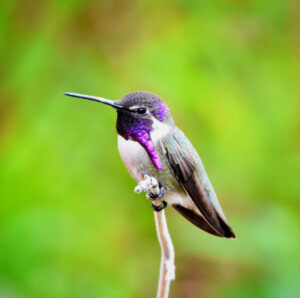
When was the first time you took a picture of a bird and realized you wanted to get more in-depth with it?
“Three or four years after college around 2012 or 2013. The bird I took a picture of was a Painted Bunting. It is a gorgeous bird. I was like “What is that thing? I have never seen something like that before!””
How many different countries have you gone to take pictures of birds for?
“Five or six countries. I think I am currently at 624 species of birds that I have seen in the world.”
Are there any final comments that you would like to add?
“I’ll share my top two books about birding in case any students want to know more about it. First, there is “The Big Year” by Mark Obmascik. It tells an awesome story that highlights the competitive aspect of birding. Next, there is “Birding Without Borders” by Noah Strycker. This book is about a bird nerdery taken to a magnificent, even beautiful extreme. Noah Strycker goes from country to country seeking out five thousand species of birds, and that is an adventure in itself.”
I would like to thank Mr. DuRoss for sharing his stories and experiences with us. Stay tuned to the Jesuit Roundup for more faculty and community news!
